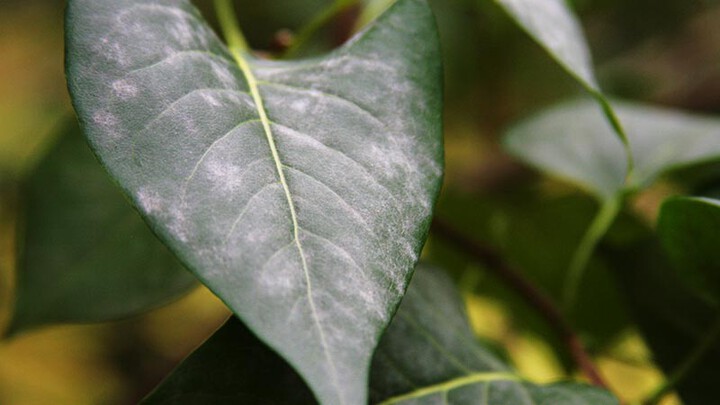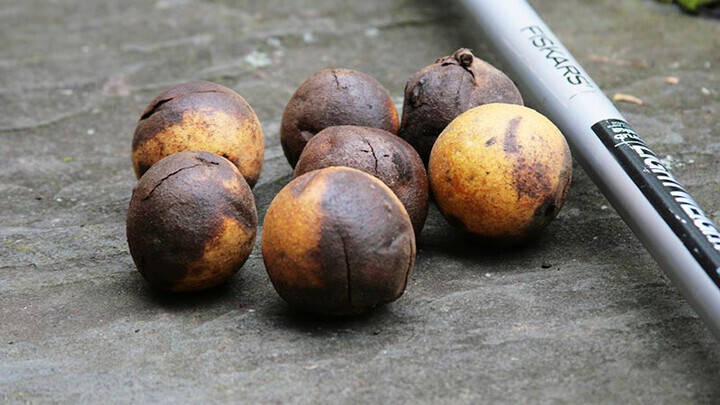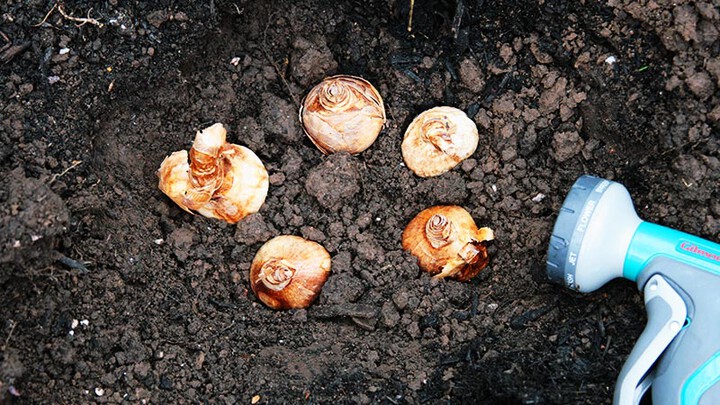Even if you follow expert gardening advice to a T and do your homework before planting, growing flowers and plants is not a perfect science. There are a number of little-known dangers that could be getting in the way of your gardening success. Before you begin another spring season, be on the lookout for these hidden threats.
·Toxic Invaders
Flanking my driveway are six “peegee” hydrangea trees, three on each side. They get the same care and sun exposure, but the ones on the right are healthy and thriving, while the ones on the left look close to death. What’s the problem? I don’t know for sure, but my educated guess would be the black walnut tree that’s lurking not far from the sickly trio.
Black walnut trees produce a toxin called juglone that poisons other plants, very effectively cutting back on competition for water, nutrients and sunlight. Certain hydrangeas are susceptible, as are many other popular garden plants—tomato and its relatives (eggplant, pepper), lilac, yew and peony, to name a few.
What’s a gardener to do? Get a list of juglone-sensitive plants from your local cooperative extension, and don’t use those plants in the root zone of a black walnut (or butternut, a close and similarly toxic relative). Rake up and dispose of dropped walnuts—don’t let them rot in the lawn or garden. Build raised beds or use large containers for the plants on the list that you absolutely must have. And try to focus on those things that are immune to the poison. Some great options include forsythia, almost all bulbs, ferns, bleeding heart and hosta.
·Fungus Damage
There are other dangers lurking below the surface of garden soil, too. If you are consistently losing tomato plants mid-season and there’s no black walnut tree around, you might have a fungus in the soil. Change where you plant your tomatoes. It’s a good idea to rotate your crops every year anyway—and don’t forget that tomatoes and potatoes share the same diseases.
Fungal spores spread via water droplets that bounce off the ground. Of course, you can’t help what happens when it rains, but it’s a good idea not to water tomatoes from overhead (you don’t want splashing). Soaker hoses are a great idea for a tomato patch for this reason—they deliver water right to a plant’s roots without spraying the leaves.


Peonies, lilacs and roses are susceptible to various fungi as well. The best preventative for these and other perennials and shrubs is good hygiene. If you see mildew, remove the infected tissue in the fall (or before, if it’s very bad). Sterilize your pruners between cuts when moving from infected to non-infected tissue. Rake up fallen leaves showing signs of fungus. Dispose of all of this material in a place far away from the affected plants—either offsite or in a compost pile that will get hot enough to destroy the spores before being used in the garden.
·Watering Woes
Of course, the most common below-the-surface problem is watering incorrectly.
One watering habit that can cause damage is not watering vegetables and plants at the root. Watering over plants can leave droplets on the leaves, causing harmful disease. This also prevents water from getting to where it is needed most—the roots. A soaker hose is a good tool to use to deliver water for ongoing watering, because you can leave it in place under mulch all season long.
If you have new plants, give them the best possible start by moistening the soil, digging a big enough hole, placing the plant, backfilling by half and then watering thoroughly with your watering nozzle. Then fill in the rest of the hole and water again. And don’t forget to keep watering consistently until the plants are well established—the bigger they are, the longer that will be. Try using a water nozzle’s Shrub setting—leave it going at the base of a tree or shrub to deliver a soaking to new plants, which will help them stay healthy.

With some smart tips for tackling these common garden threats, you can make your next growing season a successful one.